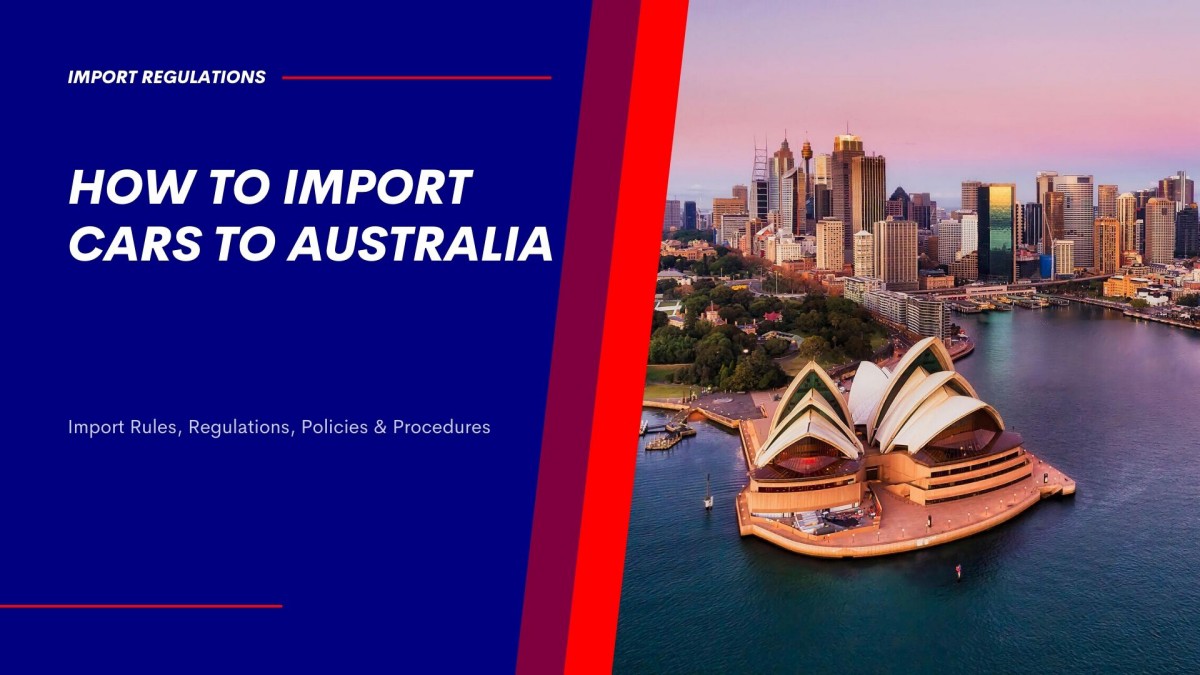Regulations for Importing Vehicles Australia 2024: Importing Guide

The landscape of vehicle importation in Australia is set to change with the introduction of new regulations in 2024. For enthusiasts and importers alike, staying informed is crucial to ensure a smooth transition and compliance with the law. This guide will take you step-by-step through the key regulations and requirements for importing a vehicle to Australia, so you can cruise in confidently!
Types of Vehicles You Can Import
Australia has a few different vehicle import schemes, each catering to specific needs and vehicle types. Here’s a quick rundown:
Personal Imports Scheme: If you’ve owned and used a vehicle overseas for at least 12 months, this scheme allows you to bring it into Australia when you move here. This is especially popular among expats returning home.
Specialist and Enthusiast Vehicle Scheme (SEVS): This scheme covers vehicles that have specialist appeal or are not sold in Australia. This might include rare models, left-hand drive classics, or high-performance sports cars.
Racing Cars and Special Purpose Vehicles: Vehicles imported specifically for motorsport purposes, such as rally cars or track-only vehicles, fall under a separate scheme with fewer restrictions on compliance.
New Vehicle Imports: You can also import a new vehicle through a Registered Automotive Workshop or as a brand-new vehicle if it meets Australian Design Rules (ADR).
The Process for Importing a Vehicle
Determine Eligibility
First things first, decide under which scheme you can import your vehicle. If the car is part of the SEVS list or a personal import, you’re already one step ahead!
Apply for an Import Approval
You must get a Vehicle Import Approval (VIA) from the Department of Infrastructure. This is mandatory before your vehicle can leave the country of origin for Australia. Applying without this approval could result in hefty penalties and seizure of your vehicle.
Compliance Requirements
Australia has strict vehicle safety and emission standards. Imported vehicles must undergo compliance modifications to meet these standards. This might include changes to lighting, seat belts, or emissions systems, depending on the age and origin of your vehicle.
Customs Clearance
Once your vehicle arrives, it needs to be cleared through Australian customs. Be ready to pay customs duty, GST, and potentially Luxury Car Tax (if your vehicle exceeds the luxury car threshold, which in 2024 is AUD 76,950 for fuel-efficient vehicles).
Quarantine Inspection
The Australian Biosecurity Import Conditions (BICON) apply to all vehicle imports. Your vehicle will be thoroughly inspected for dirt, pests, and contaminants, so make sure it’s spotless inside and out. It’s not uncommon for dirty vehicles to be held up until cleaned.
Register the Vehicle
Finally, after complying with all federal requirements, you will need to register the vehicle in your state or territory. This involves obtaining a roadworthiness certificate and paying registration fees.
Costs to Consider When Importing a Car to Australia
Import Approval Fee: Approximately AUD 100.
Shipping: The cost varies based on the size of the vehicle and origin—expect around AUD 3,000–5,000.
Customs Duties and GST: Duty is usually 5% of the vehicle’s customs value, while GST is 10% of the total landed cost (including duty and shipping).
Compliance and Modifications: Can range from AUD 2,000 to AUD 15,000, depending on the necessary modifications.
Storage and Quarantine Fees: Storage fees may apply if there are delays in clearance. Quarantine inspection fees and potential cleaning costs can also add up.
Asbestos Testing and Removal: Vehicles may be tested for asbestos, especially older models. Asbestos removal costs can be significant if any is found.
Registration and Insurance: State or territory registration fees, roadworthiness inspection, and insurance are also required.

Timeframe for Approvals and Arrangements
The timeline for importing a vehicle can vary:
Import Approval: It usually takes 4–6 weeks to obtain Vehicle Import Approval (VIA).
Shipping: Depending on the country of origin, shipping can take anywhere from 2–12 weeks.
Compliance and Modifications: This can take 2–8 weeks, depending on the extent of the required modifications.
Customs and Quarantine: The clearance and quarantine process can take an additional 1–2 weeks, depending on inspections and any necessary cleaning.
In total, the process may take anywhere from 3 to 6 months from start to finish.
Modifications to Meet Australian Design Rules (ADRs)
Yes, you will likely need to make modifications to meet Australian Design Rules (ADRs), which are national standards covering safety, anti-theft, and emissions. The modifications depend on the age, model, and original country of the vehicle but often include:
Lighting Adjustments: Headlights may need adjustment to suit left-hand traffic.
Seat Belts and Airbags: Ensuring seat belts and airbags meet Australian standards.
Emissions Compliance: Modifications may be required to ensure the vehicle meets Australian emissions standards.
Risks of Importing a Vehicle

High Costs: Importing a vehicle can be expensive when considering shipping, taxes, compliance, and modification costs. Unexpected expenses can arise, especially with compliance modifications and asbestos removal.
Delays: The import process can be lengthy, with delays possible at various stages—import approval, shipping, customs, or quarantine.
Non-Compliance: If the vehicle cannot be modified to meet ADRs, it may not be possible to register it for road use in Australia, resulting in a significant financial loss.
Customs Seizure: Failure to obtain the necessary approvals or meet biosecurity requirements can result in the vehicle being seized or sent back at the importer’s cost.
Asbestos Concerns: Older vehicles may contain asbestos components, which are strictly prohibited in Australia. Testing and removal can be costly.
Common Pitfalls to Avoid
Skipping Import Approval: Importing a vehicle without obtaining VIA in advance could mean your car is stuck at the port, resulting in storage fees and even fines.
Underestimating Costs: Costs can add up—don’t forget about compliance modifications, shipping insurance, and potential luxury car tax.
Ineligible Vehicle Models: Not every car is eligible under SEVS. Be sure to verify that your vehicle is on the SEVS eligibility list before planning your import.
Need More Help?
Importing a vehicle is a complex process, but with the right information and planning, it can be a great way to bring your dream car into Australia. For more information please contact WAAVV.
